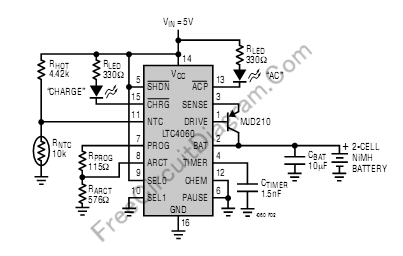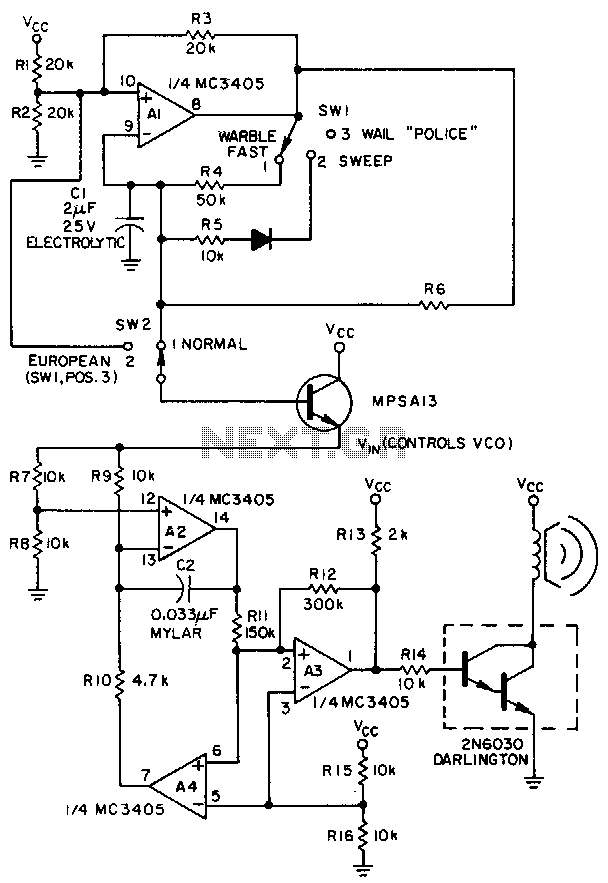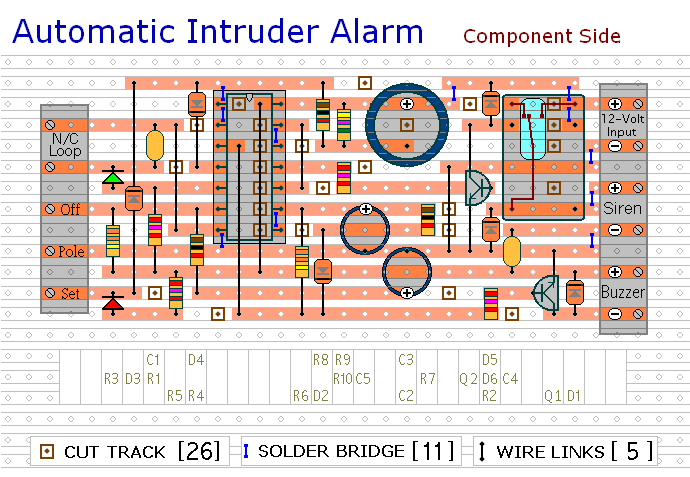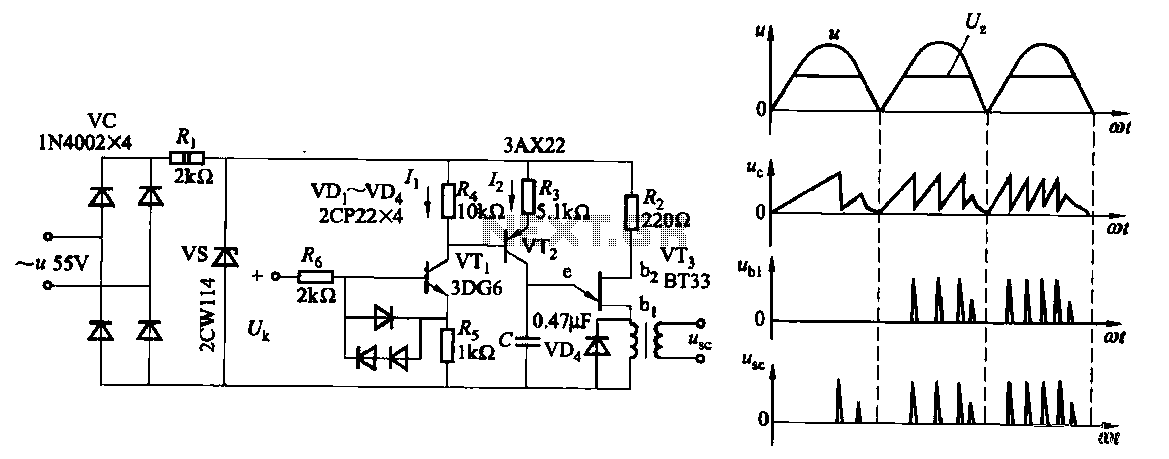
Single Chip Two-Tones Siren

Children enjoy the siren sounds of police or fire brigade vehicles. This circuit is capable of generating a dual tone similar to the siren sounds of police or fire brigade cars. This circuit typically...
This circuit is designed to replicate the distinctive dual-tone siren sounds commonly associated with emergency vehicles such as police cars and fire trucks. The heart of the circuit typically consists of an astable multivibrator configuration, which is often implemented using a 555 timer IC. This configuration allows for the generation of two alternating frequencies that combine to create the desired siren effect.
The design begins with the 555 timer, which is configured in astable mode. The frequency of oscillation is determined by the resistors and capacitors connected to the timer. By selecting appropriate values for these components, it is possible to achieve the two distinct tones that characterize the siren sound. Typically, one tone is set at a lower frequency, while the other is set at a higher frequency, creating a pulsating sound effect that resembles a real siren.
To enhance the output sound, a small speaker or piezo buzzer can be connected to the output of the 555 timer. This speaker will convert the electrical signals produced by the circuit into audible sound waves. Additionally, a transistor may be used to amplify the output signal if a louder sound is desired.
Power supply considerations are also crucial for this circuit. A standard 9V battery or a DC power supply can be used to power the circuit, ensuring that the 555 timer and any additional components receive adequate voltage for proper operation.
In summary, this circuit effectively simulates the siren sounds of emergency vehicles through the use of a 555 timer in an astable configuration, enabling children to enjoy the playful sounds of police and fire brigade cars in a safe and controlled manner.Kids like the police or fire-brigade cars siren sound. This circuit can generate dual tone like Police or Fire-brigade cars siren sound. This circuit usually.. 🔗 External reference
This circuit is designed to replicate the distinctive dual-tone siren sounds commonly associated with emergency vehicles such as police cars and fire trucks. The heart of the circuit typically consists of an astable multivibrator configuration, which is often implemented using a 555 timer IC. This configuration allows for the generation of two alternating frequencies that combine to create the desired siren effect.
The design begins with the 555 timer, which is configured in astable mode. The frequency of oscillation is determined by the resistors and capacitors connected to the timer. By selecting appropriate values for these components, it is possible to achieve the two distinct tones that characterize the siren sound. Typically, one tone is set at a lower frequency, while the other is set at a higher frequency, creating a pulsating sound effect that resembles a real siren.
To enhance the output sound, a small speaker or piezo buzzer can be connected to the output of the 555 timer. This speaker will convert the electrical signals produced by the circuit into audible sound waves. Additionally, a transistor may be used to amplify the output signal if a louder sound is desired.
Power supply considerations are also crucial for this circuit. A standard 9V battery or a DC power supply can be used to power the circuit, ensuring that the 555 timer and any additional components receive adequate voltage for proper operation.
In summary, this circuit effectively simulates the siren sounds of emergency vehicles through the use of a 555 timer in an astable configuration, enabling children to enjoy the playful sounds of police and fire brigade cars in a safe and controlled manner.Kids like the police or fire-brigade cars siren sound. This circuit can generate dual tone like Police or Fire-brigade cars siren sound. This circuit usually.. 🔗 External reference





